Can Walking a Mile a Day Help With Weight Loss? Here's What Experts Say
If you want to kick-start a weight loss routine, walking is an ideal way to begin. "There's a common misconception that walking is not an intense enough form of exercise, but walking has well-documented physical and mental health benefits," certified personal trainer, yoga and Pilates instructor, and weight loss coach Stephanie Mansour tells TODAY.
"Walking does several things to improve health," Barry Franklin, director of preventive cardiology and cardiac rehabilitation at Beaumont Hospital in Royal Oak, Michigan, tells the American Heart Association. "It lowers your risk factors for cardiovascular disease, decreases body weight and fat stores, decreases blood sugar levels, modestly improves your lipid profile, and reduces chronic stress." Here are the benefits of walking just one mile a day, according to experts.
It All Adds Up
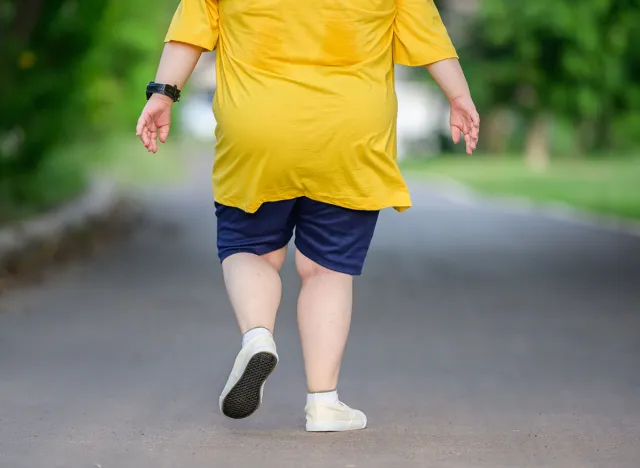
Walking just a mile may not seem like much, but it all adds up. "One day where you walk a mile doesn't seem like much, but over the course of a week, month, year…that all adds up," Tony Gentilcore, CSCS, tells Runner's World. "There's a lot of empowerment and motivation that can be drawn from that. It stands to reason that if someone goes from doing nothing to walking a mile a day, they may see a trend of weight loss over the course of several weeks to months."
Boosting Weight Loss

Walking is an excellent fat-burning exercise. "Walking has been shown to decrease all-cause mortality," NSCA-certified trainer Alfonso Moretti tells Runner's World. "In fact, the more you walk, the less likely you'll be to get cancer, arthritis, heart disease, and much more. Walking a mile every day will help boost weight loss if you're consuming a nutritious diet and are in a calorie deficit. You'll lose weight if you're consistently burning more calories than you're consuming."
Be Consistent
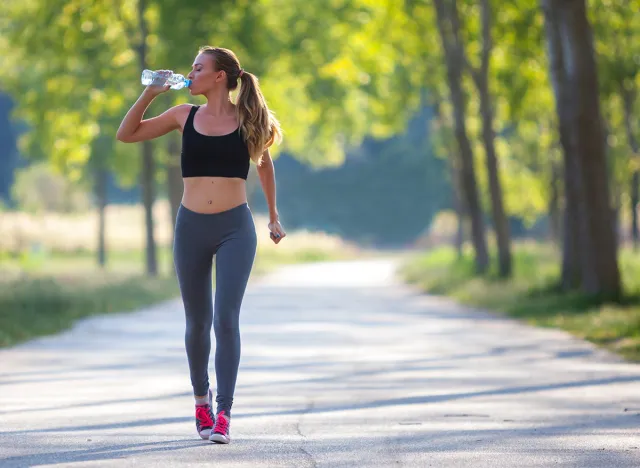
Try to be consistent with your walks. "If walking is your main source of exercise, set a goal of logging at least 30 minutes a day. If weight loss is your goal, aim for longer walks of 45-60 minutes when you can," Mansour says. "Walking briskly helps improve cardiovascular fitness and burns more calories. If you struggle to walk briskly for 30 minutes straight, try adding intervals into your walk."
Pace Matters

You will burn more calories by picking up the pace. "There's good data to suggest the most protective walking speed is above 3 mph, which corresponds to more than three times the energy spent at rest," Franklin says. "If you can get above that exercise intensity, the benefits are profound."
RELATED: I Lost 95 Pounds in Under 7 Months With These 12 Steps
Stress Relief

It's the perfect way to zone-out and rid yourself of any daily stress," says Cancer Research UK. "Plus, the exercise-induced endorphins released will leave you feeling better than ever by helping to improve your mood. Regular walking can help you maintain a healthy weight, burn calories and help tone and strengthen your muscles."
Overall Fitness
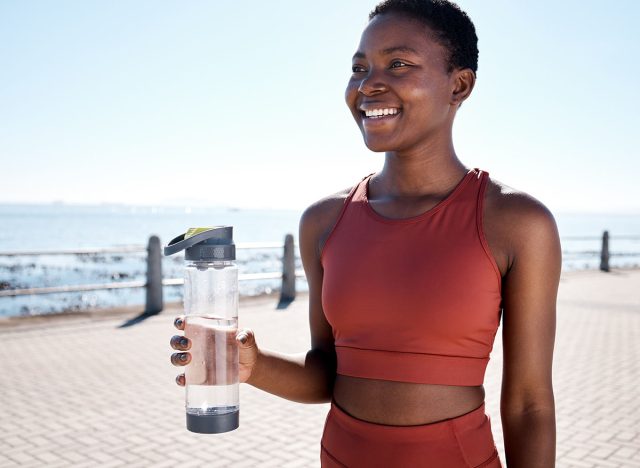
Walking a mile a day will not only encourage weight loss but improve overall fitness. "As a walker, you should aim for at least 30 minutes per day, or a total of 150 minutes per week," Austin 'Ozzie' Gontang, PhD, tells USA Today. "The distance you cover during that time will depend anyway on factors such as your walking speed and terrain. The best exercise is the one you do. Studies have shown that regular brisk walking can be just as effective as running in reducing the risk of heart disease and improving overall levels of fitness."
Set Yourself Up For Success

Make small, realistic goals for your daily walks. "Start with a simple goal, such as, 'I'll take a 5- or 10-minute walk during my lunch break.' When your 5- or 10-minute walk becomes a habit, set a new goal, such as, 'I'll walk for 20 minutes after work.' Find specific times for walks. Soon you could be reaching for goals that once seemed impossible," says the Mayo Clinic.
Try Power Walking
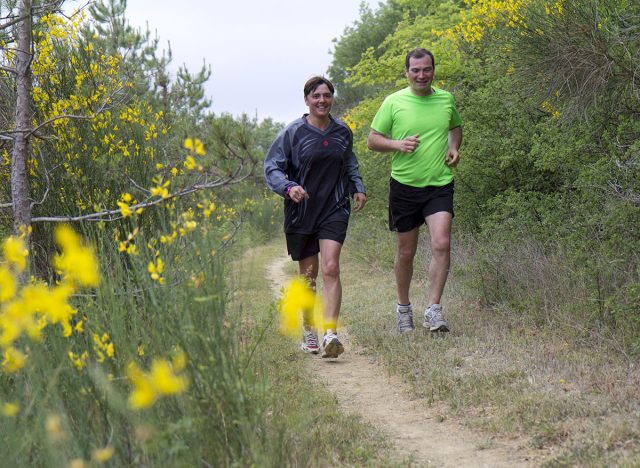
As you get used to walking a mile, try upping the ante. "You may find that walking a 15-minute mile quite challenging," Karen Feakes, CPT, tells the Cleveland Clinic. "But over time, you may be able to pick up the pace and get into a power-walking state, which is more of a 12-minute mile. The goal is to feel slightly breathless."
Walking Outside

Walking outside is a great way to get fresh air and spend time in nature. "If you walk outdoors, plan several different routes for variety," says the Mayo Clinic. "If you often walk in your neighborhood, consider walking somewhere new, such as a city or state park. Try taking routes with hills or stairs as you become used to walking more. Or walk faster for a few minutes and then slow down for a few minutes and repeat the cycle. If you're walking alone, tell someone which route you're taking. Walk in safe, well-lit locations."
RELATED: Top 14 Unusual High-Protein Foods Nutritionists Love
Increased Fat-Burning
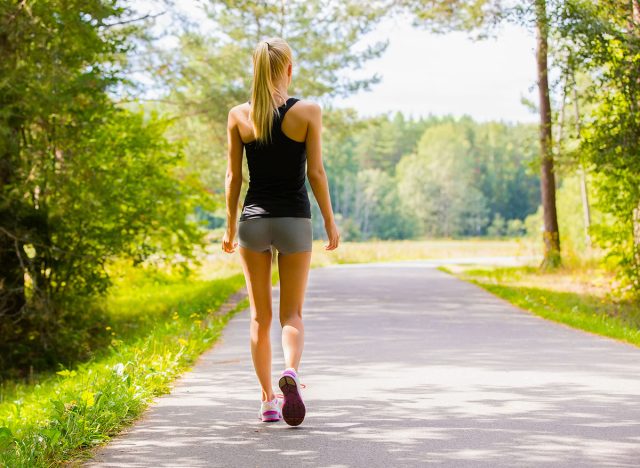
Once you get comfortable walking a mile a day, try adding more small walks. "The thing to understand is that it doesn't have to be an all-in-one walking session; you can break it up through the course of that day," Cedric Bryant, PhD, the president and chief science officer of the American Council on Exercise, tells TODAY. "Maybe you go for a 30-minute walk in the morning, and then maybe it's another 15- or 30-minute walk following dinner or during your lunch break. The idea is to try to accumulate about 45 minutes to an hour of walking, which tends to correlate best with reasonable weight loss or better weight control." And if you enjoyed this article, don't miss 12-3-30 Walking Method: 20 Proven Tips to Lose Weight Faster.





